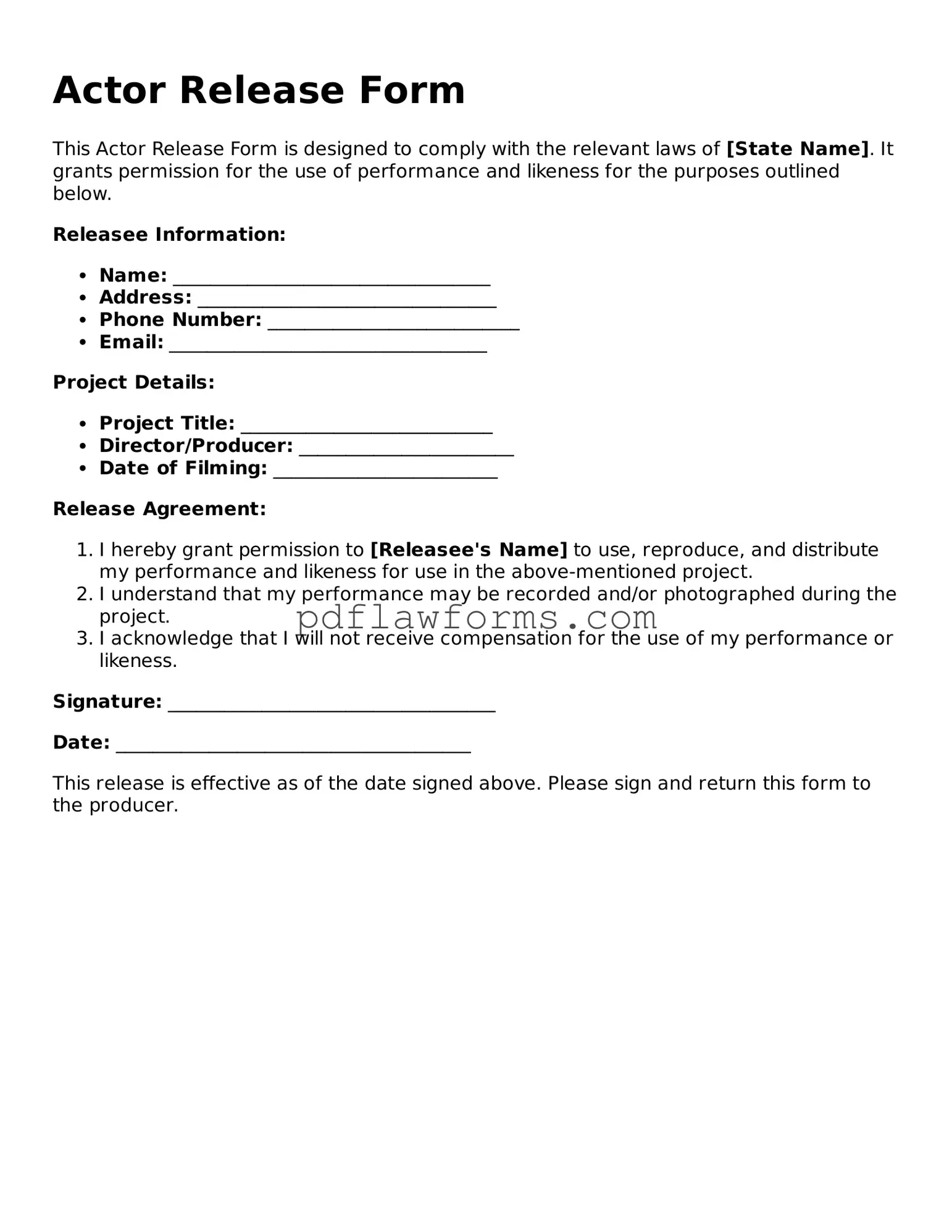In the world of film and television, the Actor Release form plays a crucial role in protecting the rights of both performers and production companies. This essential document serves as a legal agreement between an actor and the production team, granting permission to use the actor's likeness, voice, and performance in various media formats. By signing this form, actors acknowledge that their performances may be recorded and distributed, ensuring that the production can freely utilize the material without future disputes. Additionally, the form often outlines any compensation agreements, the scope of usage, and the duration for which the rights are granted. It also addresses issues of confidentiality and the handling of personal information, safeguarding the interests of all parties involved. Understanding the intricacies of the Actor Release form is vital for both emerging talents and seasoned professionals, as it lays the groundwork for a smooth collaboration and helps to prevent misunderstandings down the line.
